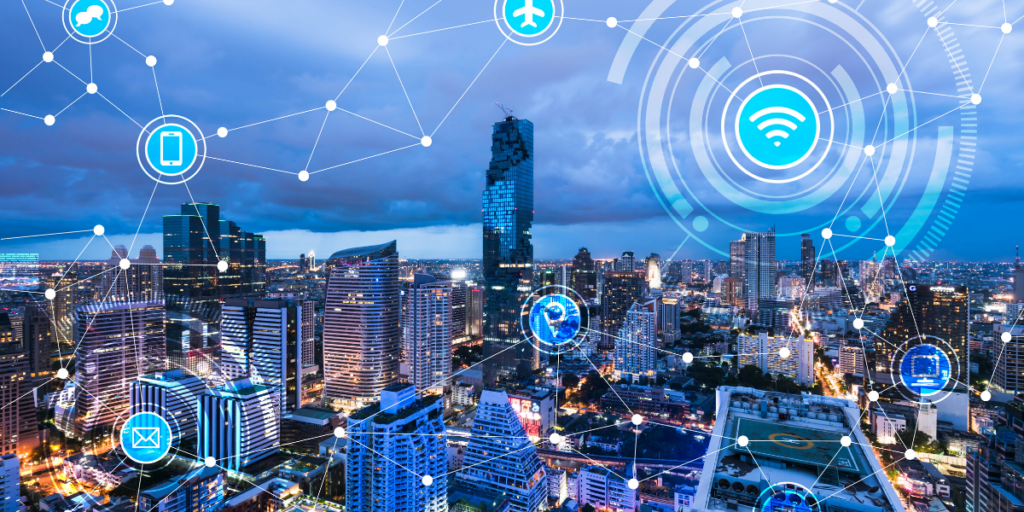Many of us are still working from home as the pandemic continues (some people may be working from home indefinitely). We are also connecting with family and friends over video chat, direct message, email, and text more than ever. With a drastic reduction in air and car travel by the average citizen, we have seen a significant drop in emissions. This is great! However, just because emissions are dropping from travel doesn’t mean they are dropping entirely. In fact, our virtual emissions are likely higher than ever. Yes, you heard me – virtual emissions. What are virtual emissions? Keep reading to find out.
"Virtual" climate change?
Allow me to start by clarifying that when I say “virtual” emissions I do not mean these emissions are being produced “virtually,” as in they are still entering our atmosphere. What I really mean by “virtual” emissions are those we produce as a result of the manufacturing, shipping and usage of electronic devices and services. When you use the Internet, for instance, you are creating emissions every time you click “search” on Google or send an email to your family member. Yes, really! While the amount of emissions produced from one phone call to your family member the next province over are much less than the emissions that would be produced by driving to see them, these virtual emissions still add up – especially with how many calls, emails, texts, likes and searches we do in a single day.

How are virtual emissions created?
The first thing we need to discuss is how. How are virtual emissions created? If you’re skeptical of the idea of virtual emissions, this will make things much clearer. Virtual emissions are created in two main ways: during the manufacturing and shipping process; and the powering and cooling of electronic devices. Attached to emissions is energy use, which also produce emissions during the production of energy.
On the manufacturing and shipping side, emissions are created from the production of the devices you use and their journey from resource extraction to the manufacturing factory to the store and eventually to your hand. Devices like computers, phones, tablets, TVs, gaming devices and any other item we have “virtual” experiences will fall into this category because a physical item is created.
The other aspect of virtual emissions are those created from the usage of your device. We need to charge or plug in our devices, which uses electricity from the local grid, which may not be a green energy source if your city does not rely on renewable resources. The Internet is not emissions-free. Think about how large the Internet is – can you think of an end point, a capacity on the information it can hold? The Internet appears limitless. There’s so much information stored on the web and despite what you may think it does hold physical “space” in terms of an ecological footprint.
How much virtual emissions do we actually create?
I did some research and found interesting stats to share with you about virtual emissions. Sending one email produces 4 grams of carbon dioxide per recipient; an email with an attachment can produce 50 grams of CO2. The more people you email (i.e. clicking “reply all”) the more emissions produced, as well. And your emissions from an email will depend on whether you are using a laptop, a tablet, a phone, etc. In comparison, a text message without photos or emojis may produce around 0.014 grams of CO2 per text. This obviously increases when texting in a group chat, sending multiple short texts in rapid-fire mode while on a rant, or sending your friends all the childhood photos you just discovered in your family home. In comparison, sending one 10 gram letter through the physical mail produces around 140 grams of CO2 per letter. That’s 35 times more than a regular email, and 10,000 times more than a regular text!
These numbers may sound small – and they are. An individual text message produces nowhere near the emissions of driving a car, or running a coal-using factory or even sending a letter. So is the virtual world more eco-friendly than the physical one? In many ways yes, but just like plastic water bottles, shopping bags and other individual items, the impact can add up. You know me, I like to show you how individual actions can make larger impact, so let’s scale up our actions.
A German researcher found that using your phone for one hour each day for a year produces 1.4 tonnes of CO2 per person, and there are roughly five billion people in the world using phones. And let’s be real, we use our phone for more than an hour each day, so that’s definitely an understatement of the impacts our phone usage (not considering the manufacturing) create. In a 2011 study, it was estimated that 32,000 tonnes of emissions were created globally from texting alone, which is roughly equal to the weight of 180,000 full-sized blue whales (165 tonnes). That was 2011, when the global population was 800,000 less and we didn’t rely as heavily on technology for our everyday activities. By 2040, researchers from McMaster University estimate that emissions from the Information and Communication Technology (i.e. virtual communications) could account for 14 percent of global emissions – and this was estimated before COVID-19 hit, so the total percentage will likely be much higher now as we rely more and more on virtual communication tools for work and leisure. All of this to say: emissions produced by a single text, email or like may be miniscule, but when considering how much we rely on our devices and the internet to live, work and play, these numbers are concerning. Don’t forget that we are still producing emissions from so many other daily activities. This is just part of our ecological footprint that you may have overlooked before.

is it worth it to try reducing virtual emissions?
After seeing the numbers, you are probably wondering if it’s even worth it to try reducing our virtual emissions when there are much more significant culprits in our lives. You may be right if your goal is to cut the most emissions from your life in the shortest amount of time. On the other hand, we text, email, surf the web and scroll on social media every single day. If you are looking for simple ways to reduce your impact every day, finding ways to cut your virtual emissions may be one strategy for you. I am not trying to take sides in this post, telling you that you should or should not try to cut your virtual emissions. Rather, I want to educate you about this topic that is rarely discussed and give you the infromation and tools needed to make a change if you so choose.
ways to (realistically) reduce your virtual emissions
If you are interested in reducing your virtual emissions, that’s awesome. If you are hesitant, that’s okay, too. To help you make a decision, let’s explore some ways you can reduce your emissions in a realistic way. Let’s be real: it is not realistic to tell people to text or email less, especially when it is so essential to our everyday lives. Instead, let’s look at strategies that are realistic in today’s digital world:
- No more vampires. Unplug devices when they are fully charged, or switch off your smart power bars. Fully-charged devices and chargers suck energy from the grid even when they are not in use.
- Think before you buy. Our society is driven by consumerism. As such, every year when big-name electronic companies release new phones, computers and devices, we are quick to buy them even if our current device is perfectly functional. Next time you go to purchase the newest phone, ask yourself why you need that new version. Deferring a purchase will not only save you $1,000+ but cut your virtual emissions connected to the manufacturing and shipping of the device.
- Your website’s hosting service. Websites are operating by hosting services, which run on energy. What type is energy is your hosting service using? You can opt to have your site run on renewable energy by choosing a green hosting service. For instance, Clear the Air is hosted by GreenGeeks, hosting service certified by the EPA Green Partnership Program as running on renewable energy. Reducing the carbon footprint of your personal website’s backend is a simple yet effective way you can make change without noticing a difference.
- Your inbox. Tired of receiving pointless emails from companies you subscribed to who-knows-when just to get a discount on an order? Let your virtual carbon footprint be the incentive to unsubscribe. The fewer emails blasted out, the less emissions produced. When sending emails, limit your usage of the “reply all” function (and make sure you don’t use it by accident…because we’ve all been there).
- Your scrolling time. Reducing your mindless scrolling time on social media is a goal I know many people (myself included) have set. Think about it in terms of emissions: the more I mindlessly scroll, the larger my carbon footprint because the more energy that is needed to power and cool my device as well as operate the internet.
- Time to sleep. Set your computer’s sleep mode to kick in after shorter periods of inactivity. While sleep mode still uses electricity, it uses at least one-third less than if your computer stayed on while you were absent. Try setting your sleep mode to five minutes or less of inactivity.
final thoughts
As you can see, reducing your virtual emissions is actually quite simple and you may be taking some of these effective actions already. What is really comes down to is being a conscious consumer and being mindful of your daily actions. While our personal virtual emissions may seem minuscule in the grand scheme of climate change, it is clear now that our actions really do add up. That means if we all make the effort to reduce our virtual emissions even in one way every day, our positive impact can be huge.
If you enjoyed this post, be sure to leave a comment and check out these related posts:
- What is a circular economy?
- What is carbon pricing?
- Are greenhouses environmentally friendly?
- Organic versus local foods: which are better?
- Ten tips for living sustainability in university
What are some ways you can reduce virtual emissions that you can think of? Let me know in the comments!
Until next time.







Great post, Jenna! Virtual emissions are definitely an issue most people don’t know about or consider. You’ve just reminded me that I should go through my inbox and unsubscribe to as many websites as possible
I’ve also seen some studies about the effects (carbon emissions) associated with streaming music and digital content (eg. Netflix). However, as someone who loves Spotify, I’m not sure if I’m ready for that conversation (lol).
https://www.rollingstone.com/music/music-features/environmental-impact-streaming-music-835220/
Great post, Jenna! Virtual emissions are definitely an issue most people don’t know about or consider. You’ve just reminded me that I should go through my inbox and unsubscribe to as many websites as possible.
I’ve also seen some studies about the effects (carbon emissions) associated with streaming music and digital content (eg. Netflix). However, as someone who loves Spotify, I’m not sure if I’m ready for that conversation (lol).
https://www.rollingstone.com/music/music-features/environmental-impact-streaming-music-835220/